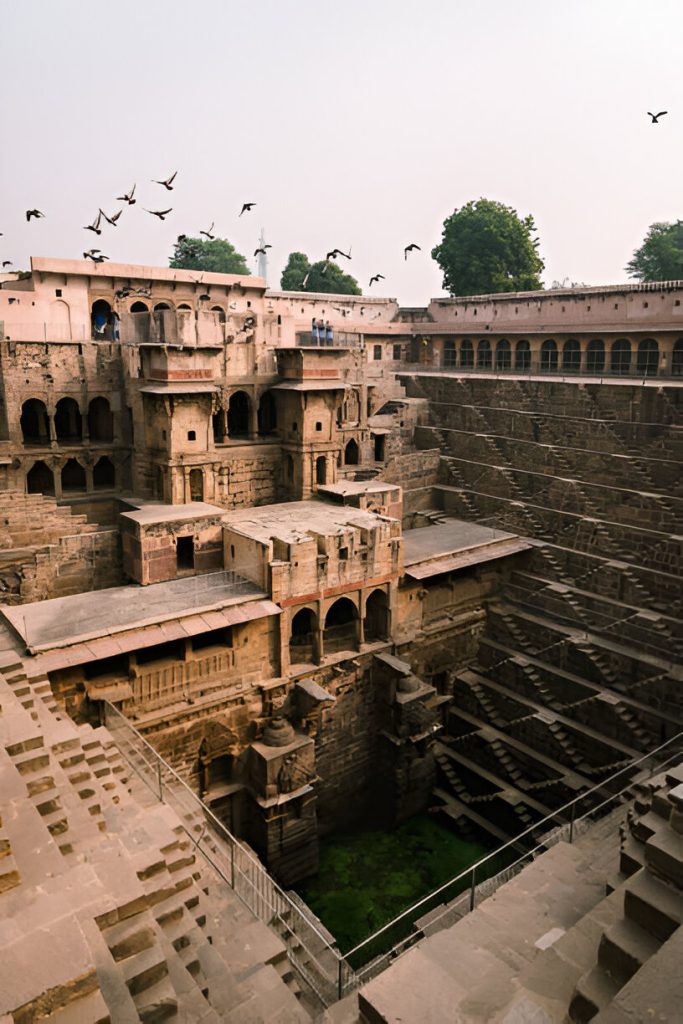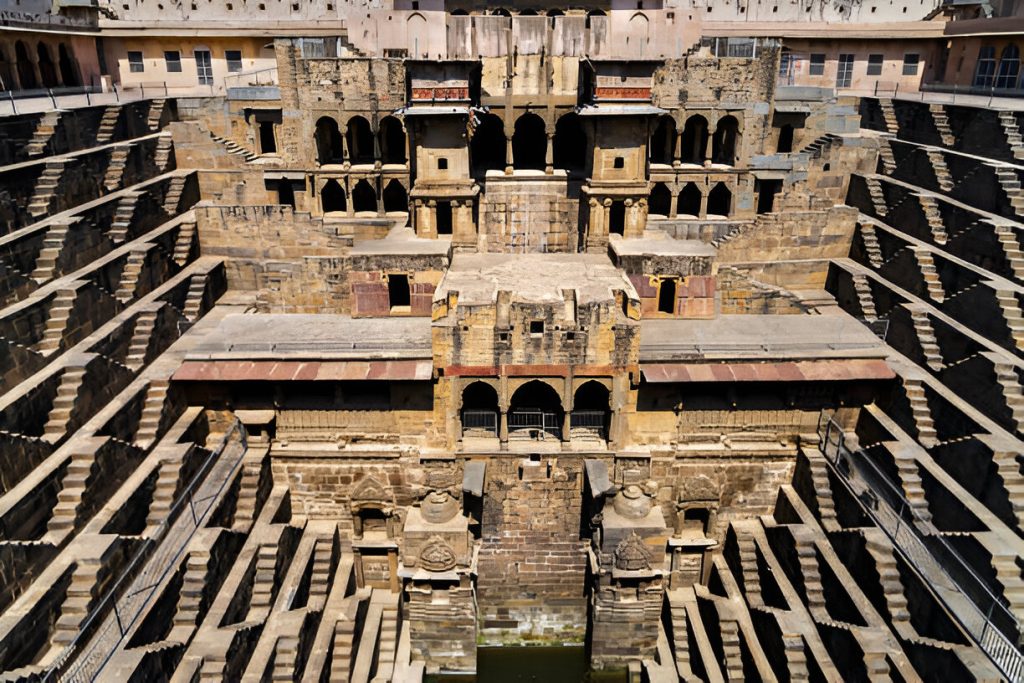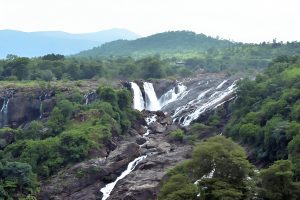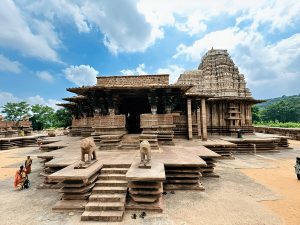My husband and I had explored many forts and palaces, but nothing prepared us for the mesmerizing stepwell in Rajasthan. The breathtaking geometry of this ancient marvel, hidden in the small village of Abhaneri, about 95 km from Jaipur was an amazing experience.
Architecture
The splendor of Chand Baori flashed itself before us when we got there. The stepwell was unlike anything we had ever seen, having been constructed more than a millennium ago under King Chanda of the Nikumbh dynasty.

The genius of ancient Indian engineering was demonstrated by the 3,500 small steps that formed a perfect, symmetrical labyrinth that descended down into the ground. We were stunned when we first saw it. It is designed in an inverted pyramid shape and with steps on three sides in a crisscross pattern.
Purpose
Build to store rainwater efficiently, it served as a crucial water source in arid regions. Its construction reflects advanced knowledge of hydraulics and geometry. The stepwell’s design allows water to flow freely, ensuring the water remains fresh. The stepwell, we learned, was more than just a water reservoir—it was a community gathering space, a place of worship, and an architectural marvel designed to trap cool air, offering respite from Rajasthan’s scorching summers.
Basic Info
Those arriving by vehicle found it beneficial since there was plenty of parking close to the entrance. We saw a little ticket desk as we approached the gate; Indian tourists were admitted free of charge, but foreign visitors had to pay a small price. Since photography was permitted, we joyfully pulled out our cameras to document the stepwell’s breathtaking symmetry.. A few other tourists were present, but the crowd was sparse compared to the more popular attractions in Rajasthan, allowing us to take in the beauty of the site without much disturbance.
The air was thick with history, and as we walked around, our guide shared fascinating details. We marveled at the intricate stone carvings on the walls, depicting scenes from mythology and daily life in ancient times. We were allowed to walk around the perimeter and admire the view from designated platforms. However, stepping down the steps was strictly prohibited for tourists due to safety concerns. Though we wanted to descend and touch the cool water at the bottom, the preservation efforts made perfect sense. Instead, we carefully observed the patterns of the steps, imagining how villagers once gathered here to get some relief from the heat.

Harshat Mata Temple
Our visit was made more spiritual by the nearby Harshat Mata Temple, which is devoted to the goddess of pleasure and happiness. We paused to enjoy the peace and were thankful for our trip together. We sat for almost an hour enjoying some quality time together because there were fewer people around and the setting was ideal. We discussed the architecture, the time required to construct this magnificent marvel, and the efforts made in its construction. The remains of statues and the well carved stone pillars suggested the creative splendor of a bygone era. We sat in quiet and enjoyed ourselves since, despite the heat, a cold wind touched us.
Final Thoughts
We couldn’t get enough of the sight and just being there to witness it. Chand Baori wasn’t just a historical site; it was a testament to human ingenuity, resilience, and artistry. Walking away, we carried with us not just photographs, but a deep appreciation for Rajasthan’s lesser-known wonders and the timeless romance they inspire.

If you ever find yourself in Rajasthan, do not miss this hidden gem. It’s not just a stepwell; it’s a journey into the heart of India’s rich past—one that you will remember forever.











